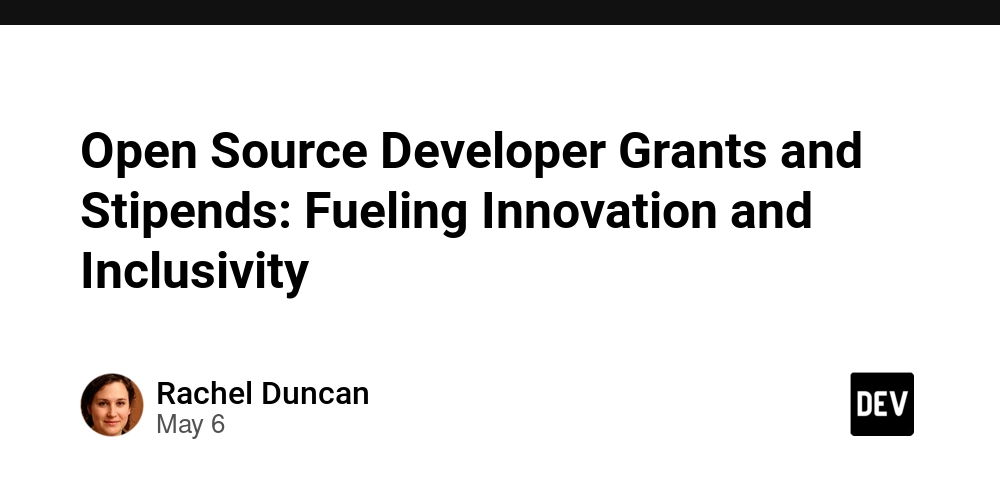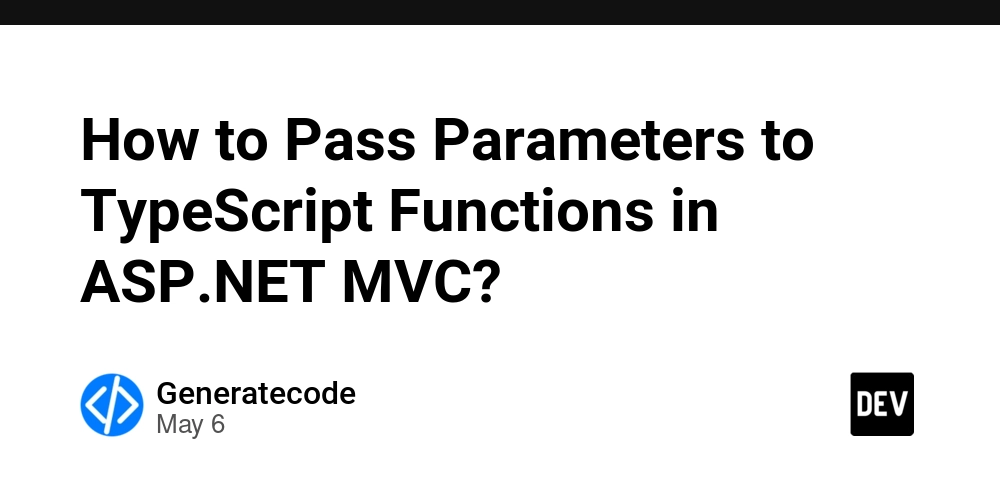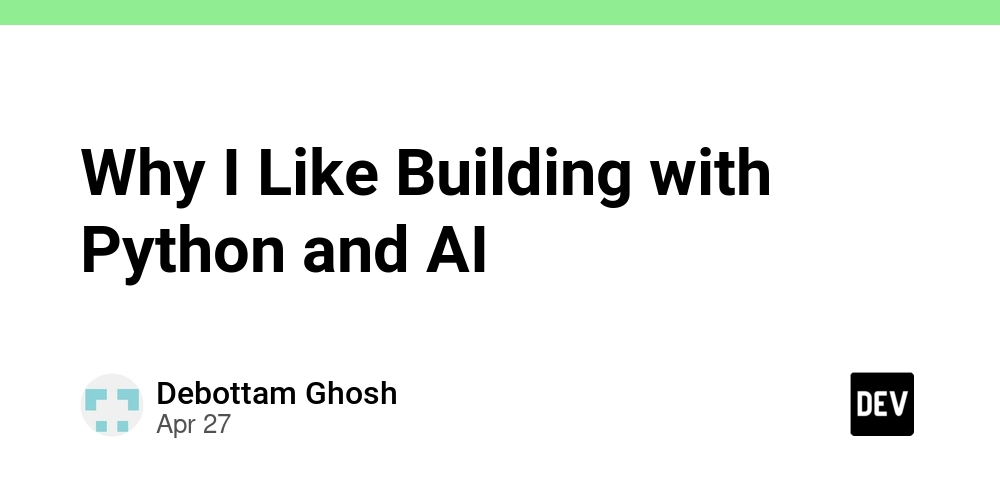Open Source Developer Grants and Stipends: Fueling Innovation and Inclusivity
Abstract Open source developer grants and stipends serve as the backbone to sustainable open source innovation. This post delves into the history, core concepts, practical applications, challenges, and future outlook of such funding models. We explore how these financial mechanisms empower developers by reducing dependency on unpaid work and enhancing community diversity. With relevant real-life examples, tables, bullet lists, and curated external resources, we present a clear, technical, yet accessible guide to understanding and leveraging grants and stipends in open source funding. Introduction Open source software drives today’s digital innovation—from blockchain networks to enterprise solutions. However, projects often rely on unpaid volunteer work, which can lead to burnout and stagnation. To overcome these challenges, open source developer grants and stipends have emerged as effective financial instruments, ensuring developers receive sustainable funding. In this post, we explore the evolution of funding in open source, highlight key concepts such as financial empowerment and transparency, and discuss both the practical use cases and challenges of these models. We also analyze future trends that integrate blockchain technology and tokenized incentives, creating an ecosystem where open source funding is both inclusive and resilient. Background and Context The open source movement began as an alternative to proprietary, closed-door development. It has evolved into a multi-billion-dollar ecosystem where thousands of projects thrive on community contributions. In the early days, developers worked largely as unpaid volunteers, but as open source became mission critical—powering blockchain, NFTs, and other modern technologies—the need for structured financial support grew dramatically. Historically, this lack of compensation led to challenges such as burnout and stagnation. With the rise of funding mechanisms like grants, stipends, and sponsorships, projects now have a reliable method to secure financial backing, ensuring quality, security, and sustainable growth. Below is a brief timeline that captures the evolution of open source funding: Year Milestone Impact 1980s Emergence of collaborative development models Foundation for open source licensing 1998 Introduction of GPL and similar licenses Formal recognition of community contributions 2008 Rise of platforms like GitHub Increased visibility and community engagement 2010s Emergence of sponsorship models Bridging volunteer work and financial sustainability 2020s Adoption of grants and blockchain-integrated funding Long-term, transparent, and inclusive funding The transition from relying solely on unpaid volunteer work (more on that in Unpaid Volunteer Work) to embracing structured grants underlines the importance of supporting developers with innovative financing. Core Concepts and Features Open source developer grants and stipends offer tangible advantages in sustaining innovation: Key Concepts Financial Empowerment: Grants provide lump-sum funding enabling developers to focus on coding and innovation without the distraction of financial worry. Sustainability: Stipends serve as recurring payments for ongoing projects, reducing reliance on sporadic volunteer contributions. Transparency and Accountability: Funding programs require detailed proposals and periodic reporting to ensure that contributions are used effectively. Inclusivity: These financial mechanisms reduce barriers, allowing developers from diverse and underrepresented backgrounds to participate equally in technology advancement. Essential Features Structured Funding Cycles: Successful funding programs come with clear timelines, objectives, and structured cycles that ensure ongoing support. Developers submit regular progress reports and demonstrations of key milestones. Multi-Source Funding: Projects often blend government grants, corporate sponsorships, and community crowdfunding to create robust financial support. This diversification shields projects from market fluctuations. Integration with Token Economies: Emerging funding models leverage blockchain and smart contracts, enabling automatic, milestone-based disbursements with transparency—an innovation that bridges open source with decentralized finance. Benefits Summary Increased Productivity: Funding lets developers allocate more time to work on projects. Risk Mitigation: Regular stipends lower the economic risks associated with unpaid labor. Enhanced Quality: Financial backing supports continuous testing, security implementations, and quality assurance. Global Inclusivity: Accessible grant programs empower developers in underrepresented regions. Community Growth: Grants encourage mentorship, networking, and cross-project collaborations. Here’s a bullet list of key benefits: Empowerment through steady funding Red

Abstract
Open source developer grants and stipends serve as the backbone to sustainable open source innovation. This post delves into the history, core concepts, practical applications, challenges, and future outlook of such funding models. We explore how these financial mechanisms empower developers by reducing dependency on unpaid work and enhancing community diversity. With relevant real-life examples, tables, bullet lists, and curated external resources, we present a clear, technical, yet accessible guide to understanding and leveraging grants and stipends in open source funding.
Introduction
Open source software drives today’s digital innovation—from blockchain networks to enterprise solutions. However, projects often rely on unpaid volunteer work, which can lead to burnout and stagnation. To overcome these challenges, open source developer grants and stipends have emerged as effective financial instruments, ensuring developers receive sustainable funding. In this post, we explore the evolution of funding in open source, highlight key concepts such as financial empowerment and transparency, and discuss both the practical use cases and challenges of these models. We also analyze future trends that integrate blockchain technology and tokenized incentives, creating an ecosystem where open source funding is both inclusive and resilient.
Background and Context
The open source movement began as an alternative to proprietary, closed-door development. It has evolved into a multi-billion-dollar ecosystem where thousands of projects thrive on community contributions. In the early days, developers worked largely as unpaid volunteers, but as open source became mission critical—powering blockchain, NFTs, and other modern technologies—the need for structured financial support grew dramatically.
Historically, this lack of compensation led to challenges such as burnout and stagnation. With the rise of funding mechanisms like grants, stipends, and sponsorships, projects now have a reliable method to secure financial backing, ensuring quality, security, and sustainable growth.
Below is a brief timeline that captures the evolution of open source funding:
| Year | Milestone | Impact |
|---|---|---|
| 1980s | Emergence of collaborative development models | Foundation for open source licensing |
| 1998 | Introduction of GPL and similar licenses | Formal recognition of community contributions |
| 2008 | Rise of platforms like GitHub | Increased visibility and community engagement |
| 2010s | Emergence of sponsorship models | Bridging volunteer work and financial sustainability |
| 2020s | Adoption of grants and blockchain-integrated funding | Long-term, transparent, and inclusive funding |
The transition from relying solely on unpaid volunteer work (more on that in Unpaid Volunteer Work) to embracing structured grants underlines the importance of supporting developers with innovative financing.
Core Concepts and Features
Open source developer grants and stipends offer tangible advantages in sustaining innovation:
Key Concepts
- Financial Empowerment: Grants provide lump-sum funding enabling developers to focus on coding and innovation without the distraction of financial worry.
- Sustainability: Stipends serve as recurring payments for ongoing projects, reducing reliance on sporadic volunteer contributions.
- Transparency and Accountability: Funding programs require detailed proposals and periodic reporting to ensure that contributions are used effectively.
- Inclusivity: These financial mechanisms reduce barriers, allowing developers from diverse and underrepresented backgrounds to participate equally in technology advancement.
Essential Features
Structured Funding Cycles:
Successful funding programs come with clear timelines, objectives, and structured cycles that ensure ongoing support. Developers submit regular progress reports and demonstrations of key milestones.
Multi-Source Funding:
Projects often blend government grants, corporate sponsorships, and community crowdfunding to create robust financial support. This diversification shields projects from market fluctuations.
Integration with Token Economies:
Emerging funding models leverage blockchain and smart contracts, enabling automatic, milestone-based disbursements with transparency—an innovation that bridges open source with decentralized finance.
Benefits Summary
- Increased Productivity: Funding lets developers allocate more time to work on projects.
- Risk Mitigation: Regular stipends lower the economic risks associated with unpaid labor.
- Enhanced Quality: Financial backing supports continuous testing, security implementations, and quality assurance.
- Global Inclusivity: Accessible grant programs empower developers in underrepresented regions.
- Community Growth: Grants encourage mentorship, networking, and cross-project collaborations.
Here’s a bullet list of key benefits:
- Empowerment through steady funding
- Reduced volunteer burnout
- Improved security protocols and update cycles
- Promotion of diversity in contributions
- Strengthened community accountability
For further insights into these concepts, check out our detailed guides on Sustainable Funding for Open Source and Open Source Sponsorship.
Applications and Use Cases
The practical applications of developer grants and stipends can be seen across various industries. Let’s explore three key examples:
1. Enhancing Security and Infrastructure
Case Study: Mozilla Open Source Support (MOSS)
Mozilla’s MOSS program is designed to finance projects that improve web security and accessibility. With grants dedicated to addressing vulnerabilities and scaling infrastructure, Mozilla ensures that community-driven projects have the resources to safeguard users. A funded project under MOSS might include enhancing a browser’s security layers or updating cryptographic protocols, which directly supports a safer digital environment for millions.
2. Nurturing Emerging Talent
Case Study: Google Summer of Code (GSoC)
GSoC is aimed at students and aspiring developers. This program provides stipends, mentorship, and real-world coding experiences to foster a new generation of tech talent. By investing in young developers, GSoC not only fuels individual careers but also injects fresh ideas into long-standing open source projects. Many alumni of this program have gone on to become core contributors, demonstrating how these funding models multiply impact over time.
3. Blockchain Integration and Tokenized Funding
Case Study: GitHub Sponsors with Token Economy Enhancements
GitHub Sponsors offers direct sponsorships to individuals, and when combined with blockchain mechanisms, projects can incorporate token-based incentives. For example, one project integrated smart contracts to automate stipend distribution upon reaching key milestones. This boosts transparency, ensures timely payments, and aligns the interests of all participants by offering governance tokens as rewards. Such models are transforming how funding flows into open source, creating a robust link between digital asset management and traditional developer support.
Below is a summary table highlighting prominent funding programs:
| Funding Program | Type | Main Feature | Example/Impact |
|---|---|---|---|
| Mozilla Open Source Support (MOSS) | Grant | Web security and accessibility | Secures critical browser updates |
| Google Summer of Code (GSoC) | Stipend | Structured support for emerging developers | Cultivates future open source leaders |
| GitHub Sponsors with Token Integration | Sponsorship/Stipend | Direct, continuous support with tokenized incentives | Ensures milestone-based funding with smart contracts |
For more details on applying for these grants, visit How to Get Sponsored for Open Source.
Challenges and Limitations
Despite the promise of these funding models, there are significant challenges to address:
Technical Challenges
- Funding Distribution: Fair allocation of funds is inherently difficult, especially when criteria vary by project size and impact. Smart contract misconfigurations can also introduce vulnerabilities.
- Integration Complexities: Incorporating blockchain-based smart contracts demands robust technical expertise and continuous security auditing.
- Inconsistent Metrics: Measuring project success beyond simple revenue can be subjective, relying on qualitative impact statements and community feedback.
Adoption and Cultural Barriers
- Volunteer Burnout: Shifting a community from unpaid contribution to a paid model may create cultural friction. Transition strategies must be carefully managed.
- Bias in Grant Allocation: Established developers or those with a history of contributions might dominate the funding landscape, leaving emerging talent at a disadvantage.
- Administrative Overhead: Managing detailed proposals and periodic reports can strain small projects, diverting funds away from actual development.
- Regulatory Hurdles: International regulations on taxation and non-profit funding add layers of complexity, often creating barriers for cross-border funding.
Trade-offs Between Sustainability and Innovation
- Short-term vs. Long-term Impact: While immediate cash infusions are beneficial, long-term sustainability requires continuous, balanced funding that doesn’t stifle creative freedom.
- Risk of Dependency: Overreliance on external grants may limit independent innovation and create vulnerabilities if funding is reduced.
A balanced approach that leverages multiple funding sources—from corporate sponsorship to tokenized incentives—along with community-driven accountability is essential for overcoming these challenges.
Additional insights on these challenges can be found in related studies such as Open Source Developer Funding Challenges.
Future Outlook and Innovations
Looking ahead, several trends are poised to reshape open source funding:
Blockchain-Enhanced Funding Systems
Blockchain technology will continue to integrate with open source grants, providing:
- Smart Contract Automation: Automating funding disbursement based on defined project milestones.
- Immutable Ledger Records: Ensuring transparency in how funds are allocated and spent.
- Tokenized Incentives: Developers could receive tokens granting governance rights or future revenue shares, aligning interests and fostering a self-sustaining funding ecosystem.
Hybrid Funding Models
An increasing number of projects will adopt models that blend corporate sponsorships, community crowdfunding, and decentralized finance. This approach minimizes risks and spreads funding sources to create a resilient financial foundation.
Global Collaboration and Inclusivity
Future funding models will be increasingly global, emphasizing digital inclusivity. With innovations in decentralized funding platforms, developers from underrepresented regions will have better access to support, thus diversifying both the talent pool and project ideas.
Enhanced Data Analytics and Transparency
Emerging funding platforms will incorporate advanced analytics to track project progress and validate the effective use of funds. Real-time insights and detailed reporting will help ensure accountability.
For further reading on these innovations, consider exploring Open Source Sponsorship and Sustainable Funding for Open Source.
Additionally, key insights from industry experts on platforms like License Token: A New Dawn in Open Source Funding provide forward-looking perspectives on blending technology and finance.
Summary
Open source developer grants and stipends are more than just monetary aid—they are strategic investments in the future of technology. By providing financial stability, encouraging diversity through inclusivity, and integrating cutting-edge blockchain technology, these funding models not only empower individual developers but also strengthen the entire open source ecosystem.
In summary:
- Financial Empowerment: Grants allow developers to focus on innovation without economic distractions.
- Sustainable Support: Regular stipends help mitigate volunteer burnout and promote quality.
- Global Impact: Inclusive funding enables diverse contributions, fueling innovation on a global scale.
- Blockchain Integration: Tokenized incentives and smart contracts pave the way for transparent, milestone-based funding cycles.
- Future Trends: Hybrid models and advanced analytics will further drive efficiency and accountability.
For anyone interested in enhancing their project's financial resilience, exploring structured funding opportunities is crucial. By utilizing robust resources like Open Source Developer Grants Overview and Open Source Developer Support Programs, you can build a sustainable pathway to innovation.
Additional Resources
To further deepen your understanding of open source funding mechanisms and explore related topics, please consider the following resources:
- Sustainable Funding for Open Source
- Open Source Sponsorship
- How to Get Sponsored for Open Source
- License Token: Empowering Open Source Funding
- Exploring Open Source Funding Lessons from Successful Case Studies
For further reading on blockchain innovation and interoperability in open source, check out:
- Exploring Blockchain Governance: Navigating Decentralization and Beyond
- Unveiling the NGPL: A Deep Dive into Fair Code Licensing
Conclusion
The future of open source is intricately tied to its ability to innovate sustainably. Developer grants and stipends not only enhance technical productivity but also foster an environment where open source communities thrive through financial stability and inclusivity. As new models emerge using blockchain integration and data-driven analytics, the open source ecosystem is poised to become even more resilient and adaptable.
Embracing these funding models is essential for anyone involved in open source development. Whether you’re a developer looking to secure your project’s future or a supporter eager to contribute, the time to act is now. Let’s create a future where technology is freely accessible, continually innovative, and supported by fair, transparent financial systems.
Open source funding is not just about money—it’s about empowering the spirit of collaboration and innovation in the digital age.
Happy coding and funding!




































































































































































![[The AI Show Episode 146]: Rise of “AI-First” Companies, AI Job Disruption, GPT-4o Update Gets Rolled Back, How Big Consulting Firms Use AI, and Meta AI App](https://www.marketingaiinstitute.com/hubfs/ep%20146%20cover.png)











































































































































































































































































_Alexey_Kotelnikov_Alamy.jpg?width=1280&auto=webp&quality=80&disable=upscale#)
_Brian_Jackson_Alamy.jpg?width=1280&auto=webp&quality=80&disable=upscale#)



 Stolen 884,000 Credit Card Details on 13 Million Clicks from Users Worldwide.webp?#)





























































































![Roku clarifies how ‘Pause Ads’ work amid issues with some HDR content [U]](https://i0.wp.com/9to5google.com/wp-content/uploads/sites/4/2025/05/roku-pause-ad-1.jpg?resize=1200%2C628&quality=82&strip=all&ssl=1)














![Apple Seeds visionOS 2.5 RC to Developers [Download]](https://www.iclarified.com/images/news/97240/97240/97240-640.jpg)
![Apple Seeds tvOS 18.5 RC to Developers [Download]](https://www.iclarified.com/images/news/97243/97243/97243-640.jpg)






























































































